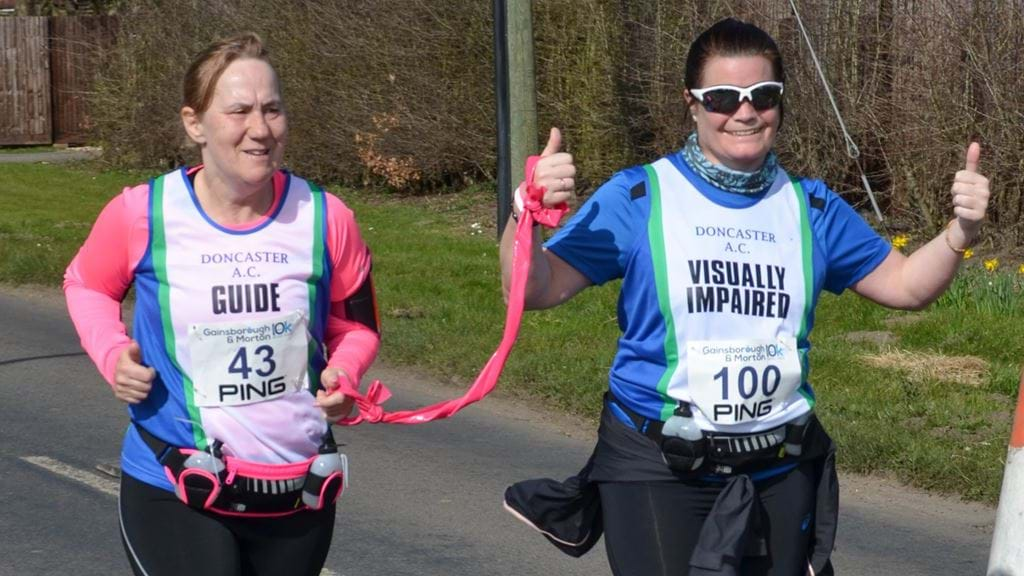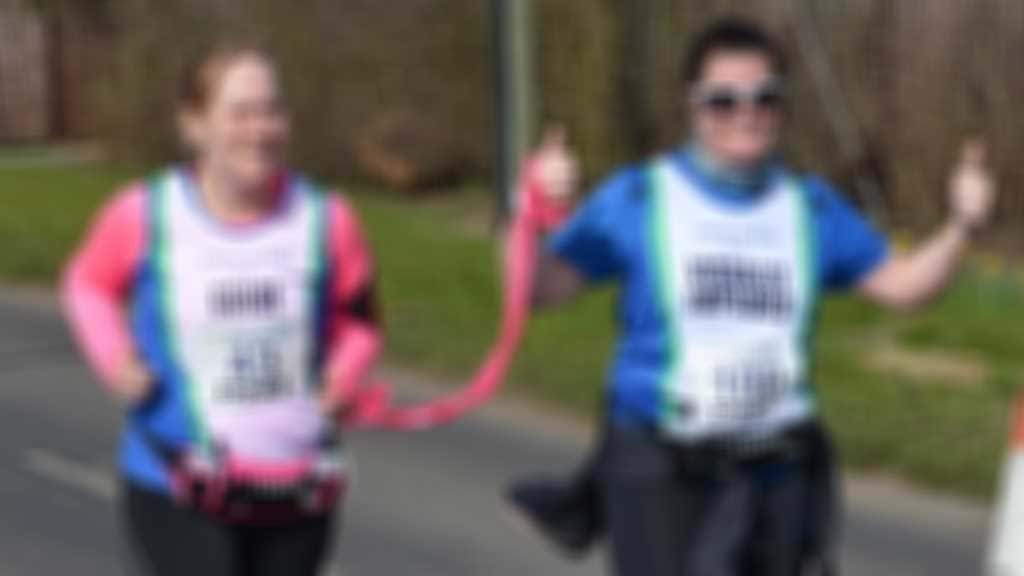From guide running workshop to competitive 10k
19 September 2016

LiRF Leader and runner Steve Pitt is also involved with Guide Dogs charity. He thought it would be a great idea to enlist on the England Athletics Sight Loss and Guide Running workshop with so he could help visually impaired and blind people to enjoy running too. Here's his story.
I attended the course with no experience in guide running. Firstly, I found it very helpful to be shown various types of visual impairment and how they may affect the way we would guide these runners. The video footage we were shown of visually imparied (VI) runners being guided and how the guide was giving instructions/warning of obstacles was very useful.
After the classroom based part of the course, it was off in to the sports hall to actually try being guided by someone whilst blindfolded. This was invaluable and really hit home just how much the visually impaired runner relies on the guide to keep them safe and avoiding obstacles, etc. It was also good to use the different glasses which recreated types of visual impairment as not all runners needing a guide are totally blind but impaired at various levels.
The one major thing I did take from the course was the fact that although there are tips and and advice on verbal instructions to give to a VI runner, it is very much down to the individual runner and guide to form a workable routine between them. And ultimately it is a bond that is formed between the two so that you understand each other and get on the same wavelength so to speak.
After my details were placed on the England Athletics database (www.englandathletics.org/findaguide), it was only a week later that I was contacted by a 20 year old lady called Lucy who had only lost her sight 3 years ago. She was a total beginner with running but wanted to get fit. We arranged to meet up and for the first session I took her to our local running track. I chose this location as it was a relatively safe environment with no obstacles. I was very nervous when we started and wanted to make sure I did a good job. We started by just walking a lap of the track so Lucy could get the feel of the location etc. After that we went into a steady jog round the circuit. Lucy asked me to keep her updated on where on the track we were, like the home straight, etc. She told me just to pull on the tether to ease her into the turns and this worked quite well. We have now done 4 sessions and she is already up to running 5k and we will soon be venturing out on to the roads as she is keen to do a parkrun
A week later I was contacted by another person called John who is 43 years old. He was inexperienced with running, however he has a good level of fitness already. Again we started on the track for a couple of sessions which also worked well.
John is already now up to running 10k and giving me a run for my money. He is fiercely competitive and keen to race soon. We have ventured off the track and on to the roads already on our last session. John has found the 3,2,1 lead up to obstacles such as kerbs to be the best. With small gaps I tell him to run tight and I pull the tether in close to me. This has worked great and we've had no issues (touch wood). We will be racing very soon and John is already talking about our first marathon.
I can honestly say that doing the guide course has been the best thing I've ever done as I'm enjoying running with Lucy and John so much.
Sight Loss and Guide Running Workshops
The workshop provides runners, leaders, coaches and volunteers with information and experience in guide running for people with a visual impairment. Click here to find a Sight Loss and Guide Running workshop.
Finding a Guide Runner
You can find a guide runner in your area by searching the national Find a Guide Database at www.englandathletics.org/findaguide. The Find a Guide database only shows licenced guide runners.
More news from RunTogether




